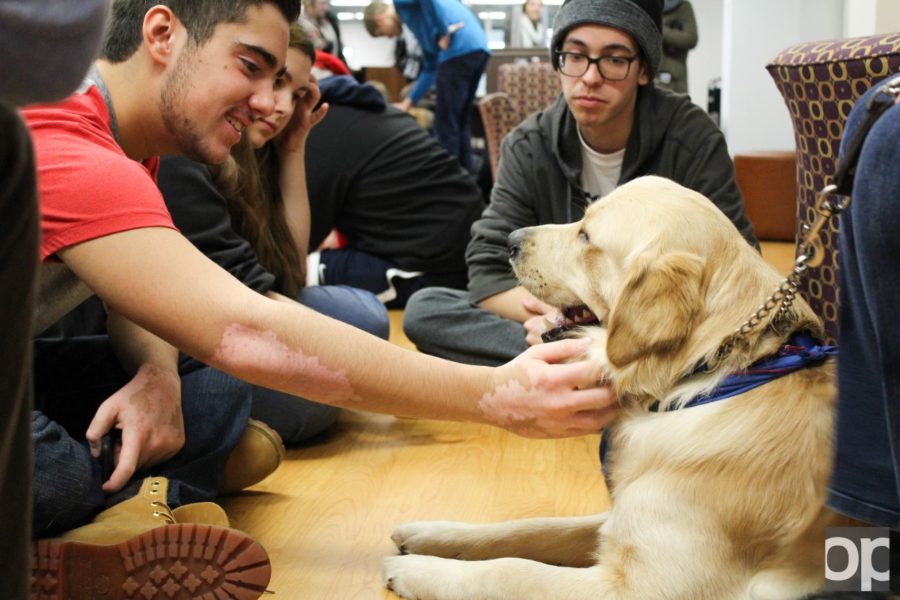Furry friends can help with stress
Every student who has studied in Kresge Library during final exams or strolled through the Oakland Center knows that when the puppies come, it’s time to stop everything and relax with them.
According to Whitney Dominick, graduate student in the social psychology program, being around dogs has been shown to reduce anxiety, lower heart rate and decrease subjective pain ratings.
“People around dogs were able to generate more life goals and feel more confident about achieving those goals compared to people not with their pets, and people with pets have better self-perceptions of health and fewer chronic conditions,” Dominick said.
Research from the University of Missouri-Columbia stated that a few minutes of stroking a dog prompts a release of a number of “feel good” hormones in humans, including serotonin, prolactin and oxytocin.
“Three to five minutes of skin-to-skin contact will release oxytocin in the brain and give us a clearer mind,” Amy Johnson, director of the Center for Human Animal Interventions and Animal Assisted Therapy Certificate Program, said.
According to NBC News, numerous studies have shown that dogs can help lower blood pressure, ease the loneliness of the elderly in nursing homes and help children overcome allergies.
Not only are the dogs helping us relax and destress, we are helping them, especially the leader dogs in training.
According to Johnson, the leader dogs in training need to be socialized.
“The job of a puppy raiser is to expose the puppy to as many different environments, people and sounds as possible,” Johnson said.
Many dogs are trained to become guide dogs for the visually impaired.
According to CNN, the Americans with Disabilities Act (ADA) defines service animals as dogs individually trained to do work or perform tasks for a person with a disability. Tasks range from calming a veteran with post-traumatic stress disorder to retrieving keys from a hook on the wall.
Something students must pay attention to is the dogs’ body language because according to Dominick, it can sometimes be stressful for the dogs to be around too many new people at once. Their body language will show that.
As for human stress, there are different types.
“Acute stress is temporary and characterized by high levels of arousal with clear onset and offset patterns,” Dominick said via email. “Chronic stress is a continuous state of arousal in which you perceive demands as greater than the resources you have to deal/cope with them.”
There are so many other ways a student can de-stress besides petting a puppy, including physical exercise and mediation.
The Campus Recreation Center is a place that can help students de-stress. The rec offers group exercise (GroupX) fitness classes for physical activity, stress management and social interaction.
Dominick suggested that coloring, especially mandalas (repetitive, typically circular patterns), spending time in nature, eating right and getting enough sleep are other ways a student can de-stress.





